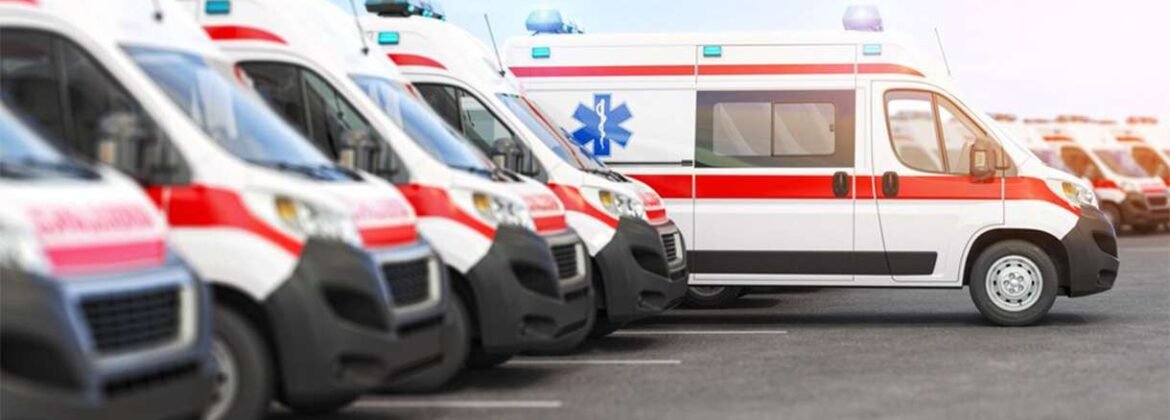Call anytime

16
Aug
Equilateral to emergency medical services is an essential aspect for medical emergency conditions, vehicle accidents, or inter-hospital transfers in ambulance transport. Such services incur costs that vary for different companies depending on distance, level of services, and company tariffs.
Competitive pricing fosters balanced safety and continuity in transport services. In both urban and rural locations, private ambulance firms, subsidized governmental schemes, and sometimes Non-Governmental Organizations (NGOs) or not-for-profit groups provide subsidized or free ambulance services.
Conducting searches along with price and service benchmarking ensures no wastage of minimalistic safety and professionalism standards. Acquiring emergency service benchmarking, service mastery understanding, and pricing enables a customized, affordable solution.
Where to Look for Local Affordable Ambulance Services
You can find ambulance services that will suit your financial needs while also being reputable by following these steps.
Yelp and Google Maps
If you search for “Affordable Ambulance Services Near You” on Google Maps, dial, or use Yelp, results will appear. You can also check review ratings that give you a glimpse into the provider’s trustworthiness.
Calling Local ER Departments
Most hospitals have agreements with ambulance companies or have their in-house services. Even in these cases, the hospital will have a list of affordable services that they can recommend.
Look for Non-Emergency Nursing Services with Transportation
The nursing services assist patients to the door and those who are able to walk and require minimal assistance. They may also offer shuttles that can be hired for a small fee.
Look for nonprofit or government-subsidized ambulance services
Some regions have ambulance services that are subsidized by the government or offered for free by nonprofit organizations.
Check Available Ambulances and Prices on Apps 108 and NHS 111
These apps can assist you in tracking the ambulances in your area, their estimated time of arrival, and the prices for their services.
What Are The Procedures To Establish If Purchasing An Ambulance Service Is Within My Budget?
Asking if something is affordable is highly subjective. Nevertheless, ambulance services can be evaluated through some specific benchmarks. Start with the most basic tools, the base fare. This is the price for getting the ambulance on standby.
Additional costs per kilometer, equipping the ambulance with items such as ventilators, and the per head costs for the onboard personnel, such as the paramedics, should also be evaluated. Discounters pay reliable ambulance services because they charge full fares for shorter distances and transfers.
For your safety, always make sure to check at least three service providers. As for ambulance customer feedback, patients most certainly mention price and whether they found it reasonable.
Affordable should never be equated with reduced services because care shall be provided. Basic safety equipment includes oxygen cylinders, and medic-trained personnel need to be provided.
Seek for partnership with some health insurance providers or discount programs targeting the elderly. There are recurrent purchasers among chronic patients for ambulance services, and these providers sell annual plans.
Are Urgent Care Services The Same As Ambulance Services?
Given the nature of ambulance services and urgent care services, the two, although closely related, differ in some aspects.
Immediate care centers are often specific clinics that address the most immediate attention on non-life-threatening injuries and diseases such as broken bones, certain infections, and even sprains.
Ambulance services are important for the transfer of patients during emergencies, as they are necessary to move patients and require medical personnel during transport.
Patient transport services are offered after urgent assessments at some centers.
For remote areas, it is worthwhile to visit urgent care centers that have partnerships, as these provide budgeted ambulance services.
What Is The Most Important Factor When Choosing An Ambulance Service
https://en.wikipedia.org/wiki/Emergency_medical_services_in_PakistanValue-added features are critical for the services offered and for the pricing to be deemed reasonable. Pricing is crucial; nevertheless, the following are equally important:
Response Time: In emergencies, speed is of the essence. Avoid services that have awful response times.
Medical Equipment: Essential lifesaving medical apparatus that the ambulance should keep must include oxygen, defibrillators, and stretchers.
Staff Qualifications: Certification for paramedics and emergency medical technicians is a bare minimum that must be met to be qualified for the staff.
Vehicle Condition: The COVID era demands for the vehicle to be disinfected adds to the pre- and post-use sanitization that must be done regularly.
Insurance Tie-ups: Contracts some services have with medical insurances for subsidization offer reduced pricing for a service covered under the agreement.
In addition, an ambulance service must be bound always to provide unrestricted service.
Ambulance service providers frequently utilize very competitive pricing because they are focused on achieving value for money and efficient service.
Can One Use Insurance Policies For Ambulance Services?
Indeed, they do. Most insurance policies provide for health-related concerns, including ambulance services, though limitations vary from policy to policy. Most policies hold a range on a range of reimbursement for single transport, or a feature for a feature.
Some policies are more flexible, only reimbursing emergency transport, while others only reimburse non-fruit transport.
To reduce your expenses, ensure that the ambulance you use accepts the insurance plan you have introduced. Review your insurance policy or talk to your insurance agent for more information.
Some hospital-affiliated ambulance services assist with cashless claims, which means that the service provider will directly settle the bill with the insurance company. This reduces some financial burden in immediate conditions, allowing individuals to focus on recovery rather than increasing expenses.
FAQs
What is the cost of ambulance services?
The average cost of ambulance services varies from area to distance to be served, services, and travel.
Are emergency ambulances charged?
Some government services will provide for an ambulance free of charge, though the vast majority of private services will charge for all, including emergencies.
Are Non-Foundation Emergency Transport eligible for scheduling in advance?
Most companies allow pre-booking for both inter-facility and intra-hospital transfer.
Do they provide life support equipment on ambulances?
They do. As two separate options, they provide Basic and Advanced Life Support (BLS and ALS, respectively).
What is the procedure for confirming the registration and licensure of an ambulance service provider?
Check the ambulance service for their documents, or visit their website. Even local health departments might have this information.
Conclusion
The right strategies and methods make locating an ambulance service simple. The provider’s safety and relevant medical standards balance the patient’s safety and the quality of service offered. Such services, which are dependable and reasonably priced, offer readiness and peace of mind in the future.

Leave A Comment